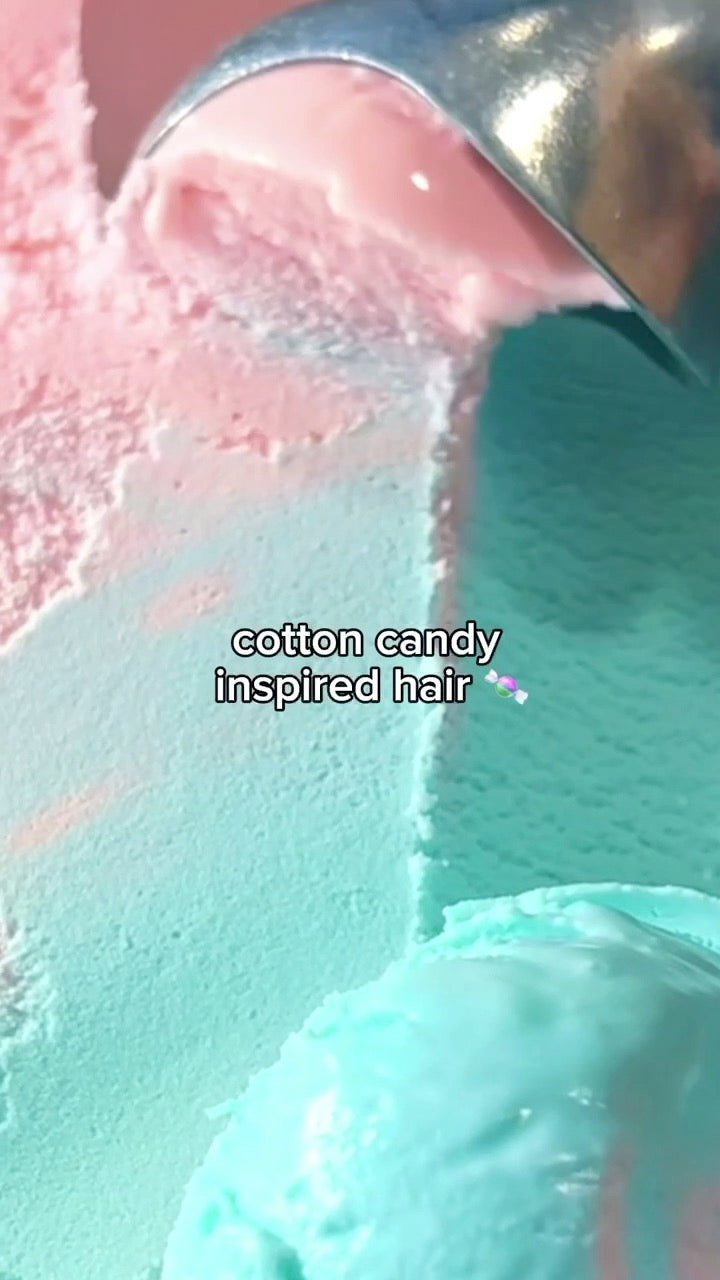
Imagine this: summer is finally here. It’s the hottest day of the year and you decide to spend it at the beach bathing in the warmth of the sun. The rumblings of crashing waves wash over your ears as toasty grains of sand rush between your toes. Squawking seagulls ride the momentum of a sea breeze that carries a sweet smell from the boardwalk to the tip of your nose: cotton candy. Life is good.
Wish you could have that feeling every single time you look in the mirror? Enter the cotton candy ice cream hair look—a delightful blend of teal and pastel pink that captures the excitement and whimsy of summer vacation. Here’s how to achieve it in just a few steps.
-
In order to get the best results, start by lightening your hair and creating your canvas with the GDY Lightening Kit. For pastel colors, you should always start with platinum level 10 hair. Alternatively, you can also do this look on a hair extension.
-
Always opt for high-quality semi-permanent dyes that prioritize vibrant, long-lasting color payoff AND overall hair health. Semi-permanent hair dye combines salon-grade pigments with a nontoxic formula that deposits ultra vibrant color. Our semi-permanent hair dyes do not damage the hair, in fact they’re super conditioning with a high-quality cream base that acts like a hydrating hair mask with essential oil benefits.
-
When mixing your colors with your Biodegradable Tool Kit, add conditioner to tone down color vibrancy and lean into the pastel finish.
-
Start by sectioning your hair to ensure even application. Begin with Narwhal, applying it to the ends of the hair to mid-shaft.
-
Next, apply Pink Puff from root to tip, blending it into Narwhal for a seamless gradient effect. You can achieve this by smudging using a gloved finger.
-
Rinse carefully with cold water in sections to avoid color bleeding.
- For the ultimate beach vibe, style with a carefree wave. If you are using heat, spritz the hair first with Prime to help prevent heat-induced fading.










